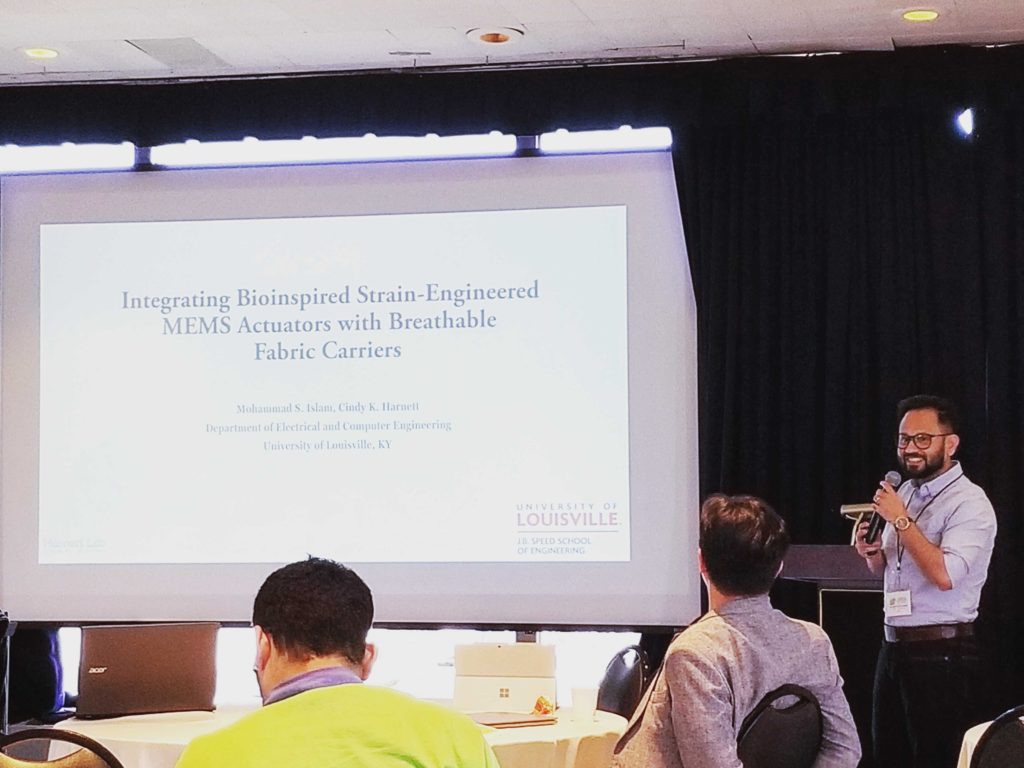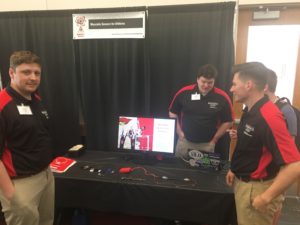
Shaf gave a talk at the Nature Inspired Surface Engineering conference in early June. Ahead of the presentation, he needed to know how strong his MEMS* devices were so he put some micro cantilevers in a microfluidic channel. The tips of the cantilevers moved as the flow rate was increased. In this video, you can also see the parabolic shape of the flow velocity profile. Meaning, cantilevers near the center of the channel deflect more because they are in faster-flowing water than the cantilevers near the walls. Results were encouraging for the feasibility of suspending MEMS in microfluidic channels to measure temperatures and local flow rates inside micro chemical reactors.

*Microelectromechanical systems
